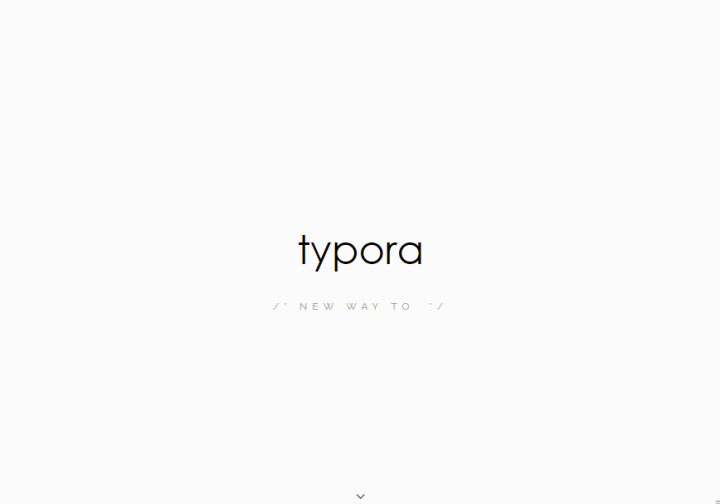

That means you can sync the files with cloud storage services such as Dropbox or OneDrive or back them up to an external drive, and they’ll be compatible with any other Markdown editor. Meanwhile, Typora still saves documents in Markdown’s. The Markdown syntax only appears when you click on formatted text, so you can learn it as you write, but you can just as easily use Typora without any Markdown knowledge at all. While those who know Markdown can still use it for faster formatting, Typora also recognizes regular keyboard shortcuts such as Ctrl-B for bold text, and it has a context menu for formatting text with just your cursor. Typora, by comparison, hides the Markdown syntax as you write. Markdown purists-including Gruber and Six Colors’ Jason Snell-say this is the way it should be, but I find that the clutter distracts from the writing and editing process.

Most Markdown editors leave these symbols in place as you type, turning your draft into a mess of asterisks, hashtags, and brackets, and the only way to view your writing without them is to open a separate preview window. The idea is that you can format text without ever breaking the flow of your typing. Putting a pair of asterisks around a word, for instance, makes the text bold when exporting it to HTML, and starting a line with a pair of hashtags creates a large subheading. Gruber developed Markdown for writing on the web, using a system of special characters to help translate text into web-friendly HTML code. Under the hood, Typora relies on Markdown, a type of text formatting syntax developed by John Gruber, also known for his writing at Daring Fireball. It seems like a small detail, but switching your writing environment can be a great way to get over writer’s block. Users who know CSS can even create custom themes-I’m quite proud of my Matrix-style theme with green monospace text on a black background-and Typora offers a theme gallery for sharing those creations. Don’t like the default black sans serif font on a white background? Select the “Newsprint” theme for a serif font on a light gray background, or choose “Night” or a dark gray background with light text. There are no options for pagination or footnotes, either.īut in clearing those options away, Typora lets you focus more on the actual words, and it also opens the door to swappable editor themes. You can’t change fonts, use different font colors, adjust line spacing, align text on the page, or add highlights. Markdown without the messĬompared to Google Docs or Microsoft Word, Typora’s text formatting options are limited. At this point, it’s hard for me to imagine writing with anything else.
#TYPORA LOGO FREE#
You can try it free for 14 days without any payment information, but for me it’s easily worth the $15 one-time purchase price.
#TYPORA LOGO SOFTWARE#
Typora is the product of a developer in Shanghai who goes by “Abner”-he has a day job as a software programmer and is uncomfortable publishing his name-and after seven years of development, the app has just launched out of beta. I first discovered Typora five years ago and have used it to write more than a thousand articles and newsletters since then. With Typora, there are no ugly toolbars, superfluous collaboration options, or clumsy menus between you and your work, and the app works entirely offline. That’s what you get when you write in Typora, a distraction-free text editor for Windows, Mac, and Linux.


 0 kommentar(er)
0 kommentar(er)
